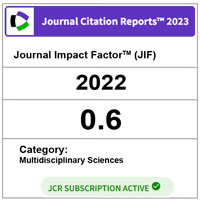A Decision Making Method using Fuzzy Soft Sets
DOI:
https://doi.org/10.11113/mjfas.v9n2.91Keywords:
Fuzzy soft sets, Uncertainty, Weight of parameters, Lambda-max method, Fuzzy analytic hierarchy process,Abstract
The introduction of soft set theory by Molodstov has gained attention by many as it is useful in dealing with uncertain data. It is advantageous to use due to its parameterization form of data. This concept has been used in solving many decision making problems and has been generalized in various aspects in particular to fuzzy soft set (FSS) theory. In decision making using FSS, the objective is to select an object from a set of objects with respect to a set of choice parameter using fuzzy values. Although FSS theory has been extensively used in many applications, the importance of weight of parameters has not been highlighted and thus is not incorporated in the calculation. As it depends on one’s perception or opinion, the importance of the parameters may differ from one decision maker to another. Besides, existing methods in FSS only consider one or two decision makers to select the alternatives. In reality, group decision making normally involves more than two decision makers. In this paper we present a method for solving group decision making problems that involves more than two decision makers based on fuzzy soft set by taking into consideration the weight of parameters. The method of lambda – max which frequently utilize in fuzzy analytic hierarchy process (FAHP) has been applied to determine the weight of parameters and an algorithm for solving decision making problems is presented. Finally we illustrate the effectiveness of our method with a numerical example.References
D. Molodstov, Journal of Computers and Mathematics with Applications, 37 (1999), 19-31.
P.K Maji, and A. R. Roy, Journal of Computers and Mathematics with Applications, 44 (2002), 1077-1083.
P.K Maji, R. Biswas, and A.R. Roy, Journal of Computers and Mathematics with Applications, 45 (2003), 555-562.
M.I. Ali, F. Feng, X. Liu, W.K. Min, M. Shabir, Computers and Mathematics with Applications 57 (2009) 1547 – 1553.
N. Cagman, and S.Enginoglu, European Journal of Computers and Mathematics with Applications, 207 (2010a),848–855.
H.Aktas and N. Cagman (2007), Journal of Information Sciences, 177, 2726-2735.
T. Herawan, and M.M. Deris, Lecture Notes in Computer Science, Volume 6018, Springer, Berlin Heidelberg, (2010), 405-418.
P.K.Maji, R.Biswas, and A.R.Roy, The Journal of Fuzzy Mathematics, 9 (2001), 589- 602.
A.R.Roy and P.K.Maji, Journal of Computational and Applied Mathematics, 203 (2007),412-418.
Z. Kong , L.Gao, and L. Wang, Journal of Computational and Applied Mathematics, 223 (2009)., 540-542.
Feng, F., Jun, Y.B., Liu. X., & Li, L . Journal of computational and Applied Mathematics, 234 (2010), 10-20.
B. Chetia and P.K. Das, International Journal Contemporary Mathematical Sciences, 38 (5) (2010), 1887-1894.
N. Cagman and S. Enginoglu, Journal of Computers and Mathematics with Applications, 59 (2010b), 3308-3314.
Y. Yang and C. Ji, Proceeding of AICI-2011,Part 1, Lecture Notes in Artificial Intelligence 7002, (2011), 618-627.
S.Razak, and D. Mohamad, Proceeding of Simposium Kebangsaan Sains & Matematik 19, Penang (2011a).
S. Razak and D. Mohamad, World Academy of Science, Engineering and Technology, 58 (2011b), 574-579.
N. Cagman, and S.Enginoglu, Iranian Journal of Fuzzy Systems, 9 (1) (2012) ,109-119.
N.A.M. Saadon, R.M. Dom and D. Mohamad, IEEE Conference in Science and Social Research. Kuala Lumpur (2010), 965-969.
R. Csutora, J. James, and Buckley, Journal of Fuzzy Sets and Systems, 120 (2001), 181-195.
A. Chaudhuri, K.de, and D. Chatterjee, International Journal of Information Technology, 15 (2009), 78-107.
J.W.Wang, C.H. Cheng, and H.K. Cheng, Applied Soft Computing,9(2009),377-386.







